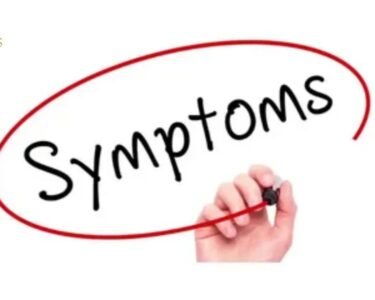Introduction
Getting a report of any kind of serious disease can be scary, and people often have a lot of questions and worries. “Can disohozid disease kill you?” is one of the most important and maybe even concerning questions. Yes, you are one of many people who have looked for “Disohozid Disease” or are worried about Discoid Lupus Erythematosus (DLE). A lot of people have trouble thinking out medical terms and making uncertain predictions.
There is good news: Disohozid is not a disease that can kill most people who have it. But it is very important to know the details of this autoimmune skin disease, its possible side effects, and how it is connected to more severe types of lupus if you want to take care of your health and live a healthy life. To answer the main question, let’s talk about what disohozid disease is, what its risks are, and how to live every day with it.
What Is Disohozid Disease? (Correctly Known as Discoid Lupus)
First, it’s necessary to know what disohozid disease is before we can talk about whether it can kill you. People commonly talk about disohozid disease in uncertain or informal ways, and their descriptions indicate to signs like:
- Severe fatigue
- Irregular heartbeat
- Cognitive fog
- Immune system irregularities
- Muscle or joint pain
Some people compare it to long-term autoimmune or neurological problems, while others say it might be a phrase used in some areas or by people who practice alternative medicine. Because there is no formal categorization for Disohozid in the ICD (International Classification of Diseases), it is important to be careful while diagnosing or treating it.
Let’s get rid of the frequent misunderstanding straight away. A lot of people look for “Disohozid Disease” online; however, it’s a phonetic misspelling. The correct medical term is Discoid Lupus Erythematosus (DLE). This condition is a chronic autoimmune disease that primarily affects the skin, leading to inflammation and characteristic lesions.
What Does Discoid Lupus Erythematosus Mean?
Certainly! The term “discoid” describes the characteristic coin-shaped or disc-like scars that characterize this type of disease. “Lupus Erythematosus” indicates its association with the rest of the lupus disease family, in which the body’s immune system attacks its own tissues. It’s a form of cutaneous (skin) lupus.
Can Disohozid Disease Kill You?
Let’s get right to the main query: No, disohozid disease is typically not a fatal disease on its own. The symptoms of disohozid disease include a developing neurological condition that affects several organ systems. Recognizing symptoms early and understanding how the disease progresses allows for efficient medical management.
Who Does It Commonly Affect?
Disohozid lupus doesn’t discriminate, but it does show some patterns:
- Gender: Women are significantly more likely to develop DLE than men, with a ratio of about 3 to 1.
- Age: It most commonly emerges in women between their late teens and early forties, though it can occur at any age.
- Ethnicity: Research indicates that individuals from racial and ethnic minority groups, particularly African American women, may have a higher predisposition to developing lupus, and sometimes more severe forms.
Disease Progression Stages
Disohozid disease advances through four distinct stages:
| Stage | Estimated Duration | Key Characteristics | Effect on Daily Functioning |
| Early | 0–2 years | Mild symptoms appear; occasional neurological signs | Daily life mostly unaffected |
| Intermediate | 2–5 years | Symptoms become more frequent; cognitive abilities decline | Requires moderate help with routine tasks |
| Advanced | 5–8 years | Severe neurological damage and onset of systemic issues | Needs consistent caregiving and support |
| Terminal | 8+ years | Total dependency; major organ systems begin to fail | Round-the-clock medical care is essential |
Is Discoid Lupus Life-Threatening by Itself?
As a condition solely affecting the skin, DLE does not directly cause organ failure or systemic complications that would lead to death. The inflammation and damage are typically confined to the skin layers. So, if your concern is specifically, “can disohozid disease kill you?” solely through its skin manifestations, the answer is no.
Severity of Symptoms
The severity of disohozid symptoms can vary widely. Some individuals might have a few small, easily managed lesions, while others develop widespread, disfiguring rashes that significantly impact their quality of life. The severity of skin symptoms, however, does not directly correlate with a life-threatening risk from DLE itself. Its danger primarily lies in potential complications or progression.
Life-Threatening Complications of Disohozid
To be clear, DLE itself does not directly lead to life-threatening complications. However, if DLE progresses to Systemic Lupus Erythematosus (SLE), then the risk of severe, life-threatening complications dramatically increases. This is the main situation in which the question Can disohozid disease kill you? becomes important because of a chain of circumstances.
Organ System Damage
The immune system attacks multiple internal organs and tissues, resulting in the following complications:
- Kidney Damage (Lupus Nephritis): This is one of the most serious complications, potentially leading to kidney failure if not aggressively treated. It’s a major factor contributing to mortality in SLE.
- Cardiovascular Disease: Inflammation can affect the heart muscle, blood vessels, or the lining around the heart (pericarditis), increasing the risk of heart attacks and strokes.
- Lung Issues: Pleurisy (inflammation of the lung lining) or pneumonitis (lung inflammation) can occur.
- Nervous System Problems: Headaches, seizures, cognitive dysfunction (lupus fog), and even strokes are possible.
- Blood Disorders: Anemia, low white blood cell count, or low platelet count are common.
| Organ System | Function Loss | Timeline |
|---|---|---|
| Heart | 40-60% | 2-3 years |
| Lungs | 35% | 1-2 years |
| Brain | 75% | 3-4 years |
| Liver | 35-50% | 2-3 years |
| Kidneys | 55% | 2-4 years |
Signs and Symptoms to Watch For
Recognizing the symptoms of disohozid disease and, importantly, the signs of potential progression to SLE, is vital for timely intervention.
Common Symptoms
The characteristic lesions of disohozid disease usually appear as
- Red, inflamed patches: These are often round or oval, resembling discs.
- Thick, adherent scales: The surface of the lesions can be crusty or scaly.
- Pigmentation changes: As lesions heal, they often leave behind areas of lighter skin (hypopigmentation) in the center, surrounded by darker skin (hyperpigmentation), or simply dark spots.
- Raised borders: The edges of the lesions may feel slightly elevated.
- Typical Locations: Commonly found on sun-exposed areas like the face (cheeks, nose, ears), scalp, neck, and sometimes the hands or chest.
- Permanent Scarring: A significant concern with DLE is that the lesions often heal with permanent, depressed scars. These scars can have a “punched-out” appearance and can be quite noticeable.
- Hair Loss: When DLE affects the scalp, it can cause permanent hair loss (scarring alopecia).
Diagnosis and Treatment Options
Getting an accurate diagnosis is the first critical step toward effective management.
How It’s Typically Diagnosed
The diagnostic process typically involves:
- Clinical Examination: A dermatologist (a skin specialist) or rheumatologist (an autoimmune disease specialist) will thoroughly examine your skin, paying close attention to the characteristics and distribution of your lesions.
- Medical History: Your doctor will ask detailed questions about your symptoms, when they began, and your family’s medical history, particularly regarding autoimmune conditions.
- Skin Biopsy: This step is often the most definitive test. A small tissue sample from an affected area of your skin is taken and examined under a microscope. This process helps confirm the presence of disohozid disease and rule out other skin conditions.
- Blood Tests: While disohozid disease itself may not always show specific blood markers, your doctor may order blood tests to:
- Rule out Systemic Lupus (SLE): For example, an Antinuclear Antibody (ANA) test is common, though a positive ANA can occur in disohozid disease patients without SLE.
- Check for general inflammation or other indicators that might suggest systemic involvement.
Possible Treatments
While there’s no “cure” for discoid lupus, effective treatments can control symptoms, prevent new lesions, minimize scarring, and significantly improve quality of life.
Topical Medications and Steroids:
- Topical Corticosteroids: Creams, ointments, or direct injections into the lesions are powerful anti-inflammatory agents that help reduce redness, scaling, and itching.
- Topical Calcineurin Inhibitors: These non-steroidal creams (like pimecrolimus or tacrolimus) can also help reduce inflammation, especially on sensitive areas like the face.
Oral Medications (e.g., Hydroxychloroquine):
- Antimalarial Drugs: Hydroxychloroquine (Plaquenil) is a cornerstone treatment for DLE and many forms of lupus. It helps reduce skin lesions, prevent new ones, and may even help prevent progression to SLE.
- Oral Corticosteroids: Short courses of oral steroids might be used for severe flares.
- Immunosuppressants: In very severe or resistant cases, medications like methotrexate, mycophenolate mofetil, or azathioprine may be used.
- Sun Protection and Skin Care: This is a critical component of DLE management, as UV light can trigger or worsen lesions.
- Daily application of broad-spectrum sunscreen (SPF 30+).
- Wearing protective clothing (hats, long sleeves).
- Limiting outdoor activity during peak sun hours.
Advanced Medical Treatments
Advanced treatment options provide intensive medical interventions to address severe symptoms in stages 3 and 4.
| Therapy Type | Success Rate | Treatment Frequency |
| Stem Cell Therapy | 68% | Every 3-6 months |
| Immunomodulation | 72% | Weekly infusions |
| Organ Support Systems | 55% | Continuous monitoring |
| Gene Therapy | 63% | One-time treatment |
Some important advanced treatments are
- Specialization organ support systems to keep the heart stable
- Particularly the immune system to stop inflammation throughout the body
- Stem cell transplantation procedures for neural regeneration
- Advanced genetic alterations delivered by viral vectors
- Specialized ventilation combined with intensive respiratory assistance
- Personalized drug regimens according to genetic profiles
Clinical evidence suggests that when these modern therapies are used ahead of organ transplantation, lifespan is increased by 8–12 years.
Daily Management Strategies
Managing disohozid disease daily involves following a set medical routine and making changes to one’s lifestyle. Patients keep detailed records of their medications for alternative enzymes that are given at intervals of 6 hours. Digital health trackers monitor vital signs such as blood pressure, heart rate, and oxygen levels to identify early warning indicators of problems.
Changes in Lifestyle
Changes to your physical routine can stop your illness from getting worse and keep you strong. Activities include:
- Swimming for 20 to 30 minutes in a pool with established temperatures.
- Yoga poses that you do while sitting that focus on controlling your breath
- Training with light resistance under physician supervision
- Massages every day that focus on the impacted muscle groups
Diet and Nutrition
Specialist meal plans help organs work and keep metabolism stable:
| Nutrient Type | Daily Requirement | Key Sources |
| Protein | 1.2-1.5 g/kg body weight | Lean meats fish eggs |
| Complex Carbs | 45-65% of calories | Whole grains, legumes |
| Essential Fats | 25-35% of calories | Nuts, seeds, olive oil |
| Antioxidants | 5-9 servings | Colorful fruits vegetables |
Support Systems
Better results in managing diseases are achieved through well-established care connections:
- Meeting monthly with multidisciplinary medical professionals
- Regular Physiotherapy appointments
- Therapy sessions are held every two weeks
- Regular participation in patient support groups
- Family education programs every quarter
Monitoring and Prevention
Severe problems can be avoided with regular monitoring:
- Every week, enzyme amounts are checked in the blood.
- Neural tests each month.
- Organ function tests are performed every three months
- Full health tests every six months
- Using computer tools to record symptoms every day
- Medical alert systems that can be tracked by GPS
- Having emergency medicine kits in several places
- Written plans for what to do in different situations
- Rules for pre-planned hospitalization
- Management of the local emergency reaction team
How to Protect Yourself and Manage the Risk
Empowering yourself with knowledge and proactive habits can significantly improve your outlook regarding the query, Can disohozid disease kill you?
Don’t Ignore Persistent Symptoms
If you notice new or worsening symptoms, especially those listed under Severe or Dangerous Symptoms (which might indicate SLE), do not delay seeking medical advice. Early detection is a powerful tool in managing lupus and preventing severe complications. Even changes that don’t seem important could have a big effect.
Keep Medical Records
Maintain a detailed record of your symptoms, treatments, medications, and any lab results. This comprehensive history can be invaluable for your healthcare team, especially if you see new specialists or seek second opinions. It ensures continuity of care and helps track your disease progression.
Seek Second Opinions
If you feel uncertain about your diagnosis or treatment plan, it’s perfectly acceptable, and often advisable, to seek a second opinion from another qualified dermatologist or rheumatologist. Different specialists might offer alternative perspectives or treatment approaches that could be beneficial.
Strengthen Your Immune System (Naturally, with Caution)
While you cannot “cure” lupus by strengthening your immune system (as lupus is an overactive immune system), supporting your overall health can improve your resilience:
- Balanced Diet: As mentioned, focus on nutrient-rich foods.
- Regular, Moderate Exercise: Consult your doctor about an appropriate exercise routine. This can improve mood, energy levels, and overall physical health.
- Adequate Sleep: Make getting seven to nine hours of good sleep each night a priority.
- Avoid Illness Triggers: Do your best to avoid infections by practicing good hygiene and getting recommended vaccinations (discuss with your doctor, as some vaccines might be contraindicated for lupus patients).
These general health practices help your body cope with the demands of a chronic condition.
Stopping Deadly Results
Disohozid disease needs to be treated right away and properly managed by a doctor to avoid death. It’s a serious illness that can be deadly, but because of current medical developments and early intervention measures, the chances of survival have gone up a lot.
Early discovery, thorough treatment plans, and regular monitoring are the keys to managing this complicated condition. Patients can live longer and have a better quality of life if they get the right medical care, make changes to their lifestyle, and have strong support systems.
People who have disohozid disease should work closely with their doctors to come up with a treatment plan that works for them and make sure they follow all of the instructions they are given. This difficult disease can be managed well with the appropriate approach and prompt help.
Final Thoughts:
Disohozid disease hasn’t been officially named by medical professionals yet, but the symptoms people explain are real and can be dangerous in some cases. Can disohozid disease kill you? At this time, there is no medical proof that a disease with this name exists or that it can kill people. Do not wait if you or someone you care about is having health problems that you can’t explain that look like those linked to Disohozid. Early identification, managing symptoms, and taking steps to prevent them can greatly lower risks and enhance quality of life.



